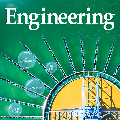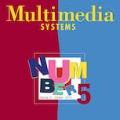【计算机类】多领域会议/专刊截稿信息6条
软件工程
Journal of Systems and Software
Special Issue on Software Architecture
全文截稿: 2018-03-31
影响因子: 2.444
CCF分类: B类
中科院JCR分区:
• 大类 : 工程技术 - 3区
• 小类 : 计算机:软件工程 - 3区
• 小类 : 计算机:理论方法 - 3区
网址: http://www.journals.elsevier.com/journal-of-systems-and-software/
Since software architecture was established as a systematic discipline in the mid 1990's, it has been subject of increasing interest in software engineering research and practice. Three classic reasons why architecture is important to software systems are: (1) architecture provides a basis for creating mutual understanding about the software system; (2) architecture design decisions have the most significant influence on system qualities; and (3) architecture provides a reusable abstraction of a system that is transferable to other systems with similar requirements promoting large-scale reuse. In the last decade, the awareness has grown that the decision making process is central to architectural design, as manifested in the notions of rational and architecture knowledge.
Despite the important developments and substantial progress in the field of software architecture, much remains to be done to achieve the vision of software architecture as an engineering discipline. Moreover, new developments such as cloud computing, mobile computing, virtualization, big data, ultra-large scale systems and systems-of-systems require new architectural solutions and raise new research challenges for the field.
We invite to this special issue high-quality contributions with innovative and significant findings and experiences in the field of software architecture. We accept as submissions original and previously unpublished papers as well as extended versions of papers presented at the 11th European Conference on Software Architecture (ECSA 2017).
The aim of this special issue is to document new contributions to software architecture research. We seek high-quality and original contributions on principles, methods, foundations, techniques and tools as well as empirical studies, systematic literature reviews and mapping studies in the software architecture field.
All submissions should be supported by appropriate arguments and validation through case studies, experiments, or systematic comparisons with other approaches already in practice. Topics of interest include, but are not limited, to:
- Foundational principles of software architecture
- New developments in architectural design, analysis and evaluation
- Management of architectural knowledge, decisions, and rationale
- Innovative architecture-centric process models and frameworks
- Architecture-centric model driven engineering
- Architectures for reconfigurable and self-adaptive systems
- Architectures for ultra-large scale, long-lived systems and systems-of-systems
- Software architecture and the cloud
- Software architecture and virtualization
- Software architecture and big data
- Architectures for cyber-physical systems
- Architectural concerns of autonomic systems
- Software architecture and system architecture, including software-defined networking
- Software tools and environments for architecture-centric software engineering
- Industrial applications, case studies, best practices and experience reports
- Empirical studies, systematic literature reviews and mapping studies in software architecture.
人机交互
CPHS 2018
IFAC Conference on Cyber-Physical & Human Systems
全文截稿: 2018-04-15
开会时间: 2018-12-14
会议难度: ★
CCF分类: 无
会议地点: Miami, USA
网址:http://www.cphs2018.org/
Steady advances in controls, communications, and computing are enabling new forms of cyber-physical systems (CPS), and are simultaneously redefining the role and position of humans in broad areas of applications, and blurring the traditional boundaries between humans and technology. Therefore, for the most part, human interactions in these technical systems are becoming more complex and raising a range of new technical challenges and broader questions touching social and even cultural domains. This newfound relationship between humans and technology must be studied from an engineering perspective, a human-factors perspective, and from the perspective of social sciences. This conference series on Cyber-Physical & Human Systems (CPHS) is intended to examine these multidisciplinary dimensions.
The second IFAC conference on CPHS builds on the success of CPHS 2016 and the H-CPS-I meeting in 2014. CPHS 2018 aims to bring together researchers and practitioners from academia and industry to share scientific and technological advances as well as gain a deeper understanding of the interactions between cyber-physical systems and humans. Of particular interest are human-centered technologies in a wide-range of applications including transportation, energy, robotics, manufacturing, and health-care. Examples of topics include human-machine symbiosis, humans as supervisors/operators of complex engineering systems, humans as agents in multi-agent systems, and humans as elements in controlled systems. In addition to the technical and theoretical contributions, the CPHS conference also invites papers studying the ethical questions, public policies, and new risks associated with interactions between humans and cyber-physical systems
人机交互
Pervasive and Mobile Computing
Special Issue on Mobile Crowdsourcing and Pervasive Computing for Smart Cities
全文截稿: 2018-04-15
影响因子: 2.349
CCF分类: C类
中科院JCR分区:
• 大类 : 工程技术 - 3区
• 小类 : 计算机:信息系统 - 3区
• 小类 : 电信学 - 3区
网址: http://www.journals.elsevier.com/pervasive-and-mobile-computing/
With the rapid development of metropolitan areas, urban problems, such as environment pollution, traffic congestion and increased energy consumption, increase more and more.
Smart cities are emerging as a novel and promising paradigm to tackle existing problems and avoid potential issues in our cities. Recently, with the pervasive usage of intelligent equipment – e.g., GPS devices, GIS tools, traffic cameras, smart cards, smartphones and road deceleration devices --, Mobile Crowdsourcing (MCS) enables citizens to collect and share data to make our cities smart. MCS can be applied in several urban scenarios, including traffic planning, mobile social recommendation, public safety, and so on.
Meanwhile, pervasive computing has been widely used to develop smart cities by utilizing emerging computing technologies. However, several challenges still exist for an effective use of MCS and pervasive computing technologies in smart cities. Research challenges include (but are not limited to): (1) How to build a MCS architecture to sense urban pulse and investigate the spatio-temporal mobility patterns comprehensively? (2) How to compute
and analyze urban big data generated by large amount of participants/devices? (3) How to fuse multi-sourced and heterogeneous data to facilitate applications towards smart cities?
To address these challenges and find effective solutions for smart cities, this special issue focuses on mobile crowdsourcing and pervasive computing research challenges in urban scenarios. Specifically, researchers are encouraged to present their latest achievements, and research directions in this area.
Topics of interest include, but are not limited to:
- Mobile crowdsourcing technology for smart cities
- Crowdsourcing systems and services for smart cities
- Application of pervasive and mobile computing technology for smart cities
- Fault tolerance, reliability and survivability in smart cities
- Vehicular social networks in smart cities
- Network communications technology for smart cities
- Data mining and analytics of urban big data
- Safety, security, privacy and trust in applications and services for smart cities
- Human mobility models for smart cities
- Multi-sourced heterogeneous data acquisition and fusion for smart cities
- Case studies and testbeds.
计算机科学与技术
Physical Communication
Special issue on The Advances of Fronthaul and Backhaul Communication for 5G and Beyond
全文截稿: 2018-05-15
影响因子: 1.583
中科院JCR分区:
• 大类 : 工程技术 - 4区
• 小类 : 工程:电子与电气 - 4区
• 小类 : 电信学 - 4区
网址: www.journals.elsevier.com/physical-communication
The next generation wireless networks (NGWNs) are envisioned to adopt a wide variety of novel concepts and paradigm shifts that will play a major role in the deployment “5G and Beyond” and “Wireless 2.0” technologies. Massive Internet protocol (IP)–based connectivity including all of the cyber–physical systems equipped with wireless transmission and reception (a.k.a. Internet of everything (IoE)), ubiquitous and superior quality of experience (QoE), improved security, extremely–low latency, environment–friendly operation, extended coverage, capacity, and data rate with enhanced efficiency are only a few of the prominent characteristics of the NGWNs among many others. In parallel with these characteristics, the services to be provided widen in such a way that augmented reality, online gaming with extended dimensions, improved manufacturing processes, precision farming, fully autonomous transportation systems and many other applications are expected to be developed based on the envisioned capabilities of the NGWNs. It is obvious that such ambitious anticipations come at the expense of strict and very demanding technical requirements such as a high–degree of softwarization, extremely–flexible architectures, seamless operations across ultra–dense heterogeneous networks with backward compatibility, optimized network access with sub–millisecond latencies, cross–layer adaptation and harmonization, high–degree of sustainability and reliability, increased security and extended privacy.
Even though each and every requirement item listed above constitutes a standalone and challenging research problem, ultra–dense heterogeneous networks with backward compatibility deserve a special attention since NGWNs must coexist with old as well as recently emerging technologies. Considering the cost of operation including deployment, maintenance, and optimization, an efficient provisioning of fronthaul/backhaul communication systems and modules is required.
In this special issue, researchers from academia and engineers from industry are invited to contribute with their solutions to challenging problems raised by backhaul/fronthaul networking and communications for NGWNs. It is believed that technical contributions in this field of research pave the way for “5G and Beyond” and “Wireless 2.0” by expediting the convergence of already existing networks and emerging ones. The scope of the special issue includes and is not limited to the following topics:
- Analysis of coexistence of multiple heterogeneous networks (cellular, WiFi, WiGig, etc.), associated problems and solutions;
- Investigation of the concurrence of different cell sizes (macro, micro, pico, and femto) present in the same physical region;
- Exploration of multiple competitive high–data rate physical layer technologies such as free–space optics, visible light, terahertz, hybrid radio frequency (RF) communications;
- Incorporation of networked flying platforms such as drones, balloons, unmanned air vehicles, and other high–altitude platforms into already existing infrastructures;
- Best practices from the industrial perspective and relevant challenges for fronthaul/backhaul communications in heterogeneous networks;
- Evaluation of security and privacy issues pertaining to fronthaul/backhaul communications links under constraints such as ultra–low latency and energy efficiency.
人机交互
International Journal of Human-Computer Studies
Special Issue on Designing Human Interactions for Cyber-Physical Systems and the Internet of Things
全文截稿: 2018-06-15
影响因子: 2.863
CCF分类: A类
中科院JCR分区:
• 大类 : 工程技术 - 3区
• 小类 : 计算机:控制论 - 3区
网址: http://www.journals.elsevier.com/international-journal-of-human-computer-studies/
The Internet of Things (IoT), comprising the large diversity of interactive devices as well as embedded sensors, is creating a seamless integration between physical objects and the digital world. Humans are able to monitor and control physical processes while interacting with very large data sets collected via sensors. In cyber-physical systems, software components and physical objects are deeply intertwined, each operating on different spatial and temporal scales, exhibiting multiple behavioral modalities and interacting both with each other and with users. They can interact with data and access services using a myriad of ways that change with their context of use.
Applications of cyber-physical systems include smart grids, global environmental and disaster monitoring, medical and homeland security systems as well as autonomous transportation and automatic pilot avionics. These systems are being facilitated by emerging technologies such as the OGC’s Sensor Web Enablement (SWE), which is a standard for making sensors and sensor data repositories accessible via the Web.
As the infrastructure for communications improves, attention can turn to the innovative interaction methods that are needed to interact with networked objects such as cars, or in the near future why not also with trees, plants, forests and animals? What would this dialogue look like and how would it take place? However, human-cyber-physical interactions are very difficult to model and fundamentally different from human-computer interaction models developed so far. Designing and validating such interactions is particularly challenging.
This special issue articulates three main design challenges with humans in the loop: (i) the need for a comprehensive understanding of the complete spectrum of the types of interaction modalities, (ii) the need for extensions to system identification or other techniques to derive design models from human experiences, and (iii) most importantly, determining how to incorporate such models into the HCI design methodologies, but also the engineering of the underlying interactions between the physical and software components.
Furthermore, traditional HCI design usually deals with the small picture only - the design of the user interfaces and the human-digital artifact interaction. They have shown limited capabilities in coping with the design of the “big picture” of multi-platforms and multi-devices, the way interactive service interacts with other ones and the way they can be combined and used via/by other services. There is an urgent need to develop a holistic, multi-disciplinary and multi-perspective approach that focuses on how to engineer interactions in cyber-physical systems with this “big picture” in mind. The big picture already exists, comprising the hundreds of thousands of services - most often data-intensive ones - available on the Web/cloud. Such services are now interacting with a wide range physical objects in a new eco-system that is characterized by four types of interactions: Digital-physical components interaction, Human-digital/physical components interaction, human-digital/physical-other human as well as the underlying human-data interaction.
The design of these forms of interactions requires:
- Broadening the vision of interactions beyond the traditional human-computer interaction, including how other stakeholders may interact and collaborate with physical objects
- Connecting different methods to design smart interaction services and user interfaces as well as the holistic view of the entire human-cyber-physical system interactions
- Building a tradeoff between the attributes that quantify the user experiences and those measuring the security and privacy. Most often these factors are seen as obstacles in interaction design
- Providing a conceptual formulation of a cyber-physical system (CPS) as a socio-technical human-data interaction system.
The special issue focusses on three main design challenges for the human-cyber-physical interactions: (i) the need for a comprehensive understanding of the complete spectrum of the types of human-in-the-loop cyber-physical system behaviors including the interactions between software components and physical objects, (ii) the need for extensions to system identification or other techniques to derive models of human behaviors, and (iii) most importantly, determining how to incorporate human behavior models into the formal methodology of feedback control.
We seek original unpublished research papers and case studies describing theoretical and practical HCI aspects of cyber-physical systems. The following topics and related ones are within the scope of this special issue:
- HCI design theories and methods and how they apply to cyber-physical systems
- Interaction with networked physical objects with embedded sensors
- Human-data interaction with IoT objects; smart city apps and services; machine-learning algorithms
- Innovative approaches to smart city services design in the context of IoT and cyber-physical systems
- User research and empirical studies on interactions with cyber-physical systems
- Examples of cyber-physical systems and smart services from automotive systems, aerospace systems, digital health information systems, manufacturing and industrial control systems (e.g. smart factory, Industry 4.0), farming and agriculture, energy systems, playable cities
- Novel interaction technology and models for cyber-physical systems
- Interactions and visualization of data in the physical space (e.g. data physicalization)
- Ethical, privacy and usability concerns around interactions between humans and cyber-physical systems
计算机科学与技术
Journal of Computational Science
Special Issue: Soft Computing for Swarm Robotics: New Trends and Applications
全文截稿: 2018-08-01
影响因子: 1.748
中科院JCR分区:
• 大类 : 工程技术 - 3区
• 小类 : 计算机:跨学科应用 - 4区
• 小类 : 计算机:理论方法 - 3区
网址: www.journals.elsevier.com/journal-of-computational-science
Swarm Intelligence (SI) refers to the complex collective behavior of self-organized and decentralized systems, typically composed of a (spatially distributed and often large) population of individuals, or agents. These agents interact among them and with the environment in different but simple and local ways, coordinating their actions, and making the swarm inherently robust, effective, and flexible. A plethora of application scenarios have hitherto resorted to SI when addressing optimization, inference and prediction tasks. Among them, Swarm robotics (SR) refers to the application of SI methods to scenarios where the population of agents is embodied by physical or simulated robotic devices. The focus of SR is to thoroughly analyze how a swarm comprised of relatively simple physically embodied robots can be controlled to collectively accomplish different kind of goals that are out of the common capabilities of a single robot. Algorithms and methods relying on SR have been so far exceled over a wide range of complex real-world problems, such as localization, mining, disaster rescue missions, agricultural foraging or scenery mapping problems. The interests in SR form a popular topic that lays at the core of many research activities and contributions in the literature. This special issue aims at disseminating the latest findings and research achievements in the areas of SI and SR, with an intention to balance between theoretical research ideas and their practicability as well as industrial applicability. To this end, scholars and practitioners from academia and industrial fields are invited to submit high-quality original contributions to this special issue.
Topics of interest include, but are not limited to:
- Recent advances on Soft Computing methods for Robotics, with an emphasis on those inspired by processes and behaviors typically observed in Nature
- Novel applications of Swarm Robotics, with a priority on real-world scenarios.
- Hybridization of Swarm Intelligence techniques, with applications to robotics or autonomous complex systems.
- New synergies between Swarm Intelligence and Swarm Robotics.
- Coordination and control of Swarm Robotic Systems.
- Adaptive Soft Computing methods.
- Applications of Swarm Intelligence for collaborative positioning and route optimization in robotic swarms.
- Distributed inference in Swarm Robotics.
- Self-organization in robotics enabled by Swarm Intelligence.
- Distributed Swarm Robotic systems.
下载Call4Papers App,获取更多详细内容!


登录查看更多
相关内容
智慧城市(英语:Smart City)是指利用各种信息技术或创新意念,集成城市的组成系统和服务,以提升资源运用的效率,优化城市管理和服务,以及改善市民生活质量。智慧城市把新一代信息技术充分运用在城市的各行各业之中的基于知识社会下一代创新(创新2.0)的城市信息化高级形态,实现信息化、工业化与城镇化深度融合,有助于缓解“大城市病”,提高城镇化质量,实现精细化和动态管理,并提升城市管理成效和改善市民生活质量。关于智慧城市的具体定义比较广泛,目前在国际上被广泛认同的定义是,智慧城市是新一代信息技术支撑、知识社会下一代创新(创新2.0)环境下的城市形态,强调智慧城市不仅仅是物联网、云计算等新一代信息技术的应用,更重要的是通过面向知识社会的创新2.0的方法论应用,构建用户创新、开放创新、大众创新、协同创新为特征的城市可持续创新生态。
Arxiv
78+阅读 · 2019年11月10日




